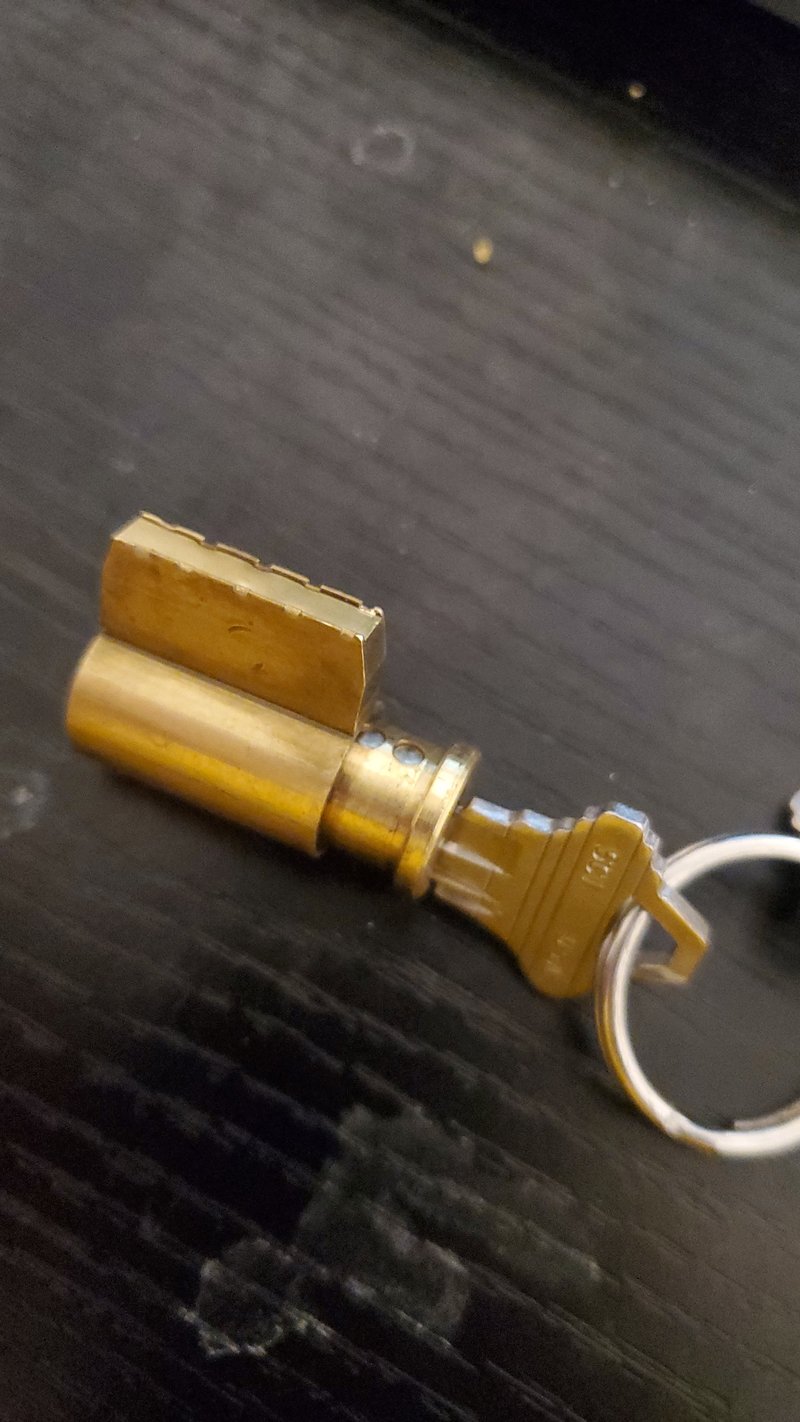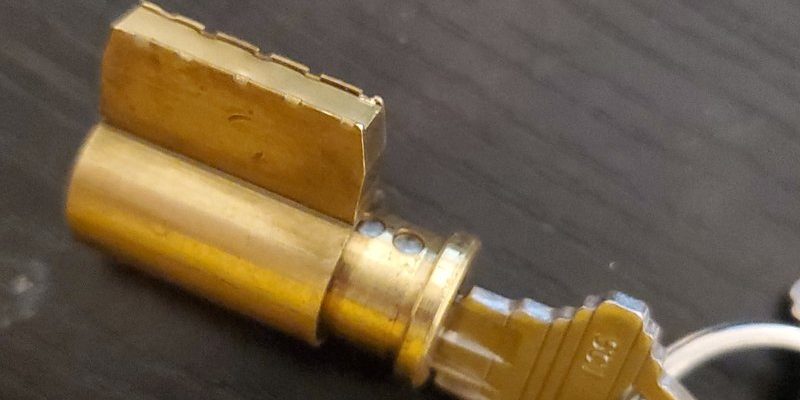
Think of a lock cylinder as a kind of mechanical puzzle. Each piece needs to click together in just the right way for the lock to turn smoothly. If a driver pin gets stuck, worn, or out of sync, it’s like trying to solve a puzzle with the wrong piece. This happens in all sorts of locks, whether it’s a Kwikset deadbolt on your front door, a Schlage handle at the office, or an old padlock you found in the garage. Honestly, understanding how driver pins work (and how to spot issues) can save you both money and stress, whether you’re troubleshooting a jammed lock or just curious about how things tick.
What Are Driver Pins and Why Do They Matter?
Let me explain: inside pretty much every pin-tumbler lock, you’ll find two main types of pins—key pins and driver pins. The key pins are the ones that sit on your key and match up to its unique cuts. The driver pins are stacked on top of those. Their main job? To keep the lock cylinder from rotating until the right key is inserted.
When you push your key into the lock, the uneven cuts push the key pins up, which in turn bumps the driver pins. If all the pins line up perfectly at the “shear line” (where the cylinder meets the housing), the lock will turn. If even one driver pin is stuck, worn, or the wrong length, the cylinder stays locked. That’s why driver pins matter so much—they’re little gatekeepers, and a problem with them means your lock isn’t opening…no matter how many times you try to sync your key.
Here’s the thing: driver pins don’t wear out or jam as often as springs or key pins, but when they do, it causes some of the peskiest problems. Understanding how these pins work makes diagnosing issues less intimidating, especially when you start to recognize the signs.
Common Signs of Driver Pin Problems in Lock Cylinders
You might be wondering, “How do I know if my lock cylinder’s driver pins are the issue?” There are a few telltale signs that point right to them.
- Key Jamming or Sticking: If your key slides in but gets stuck or feels rough, a driver pin could be wedged or gummed up with debris.
- Lock Won’t Turn Easily: Maybe the key goes all the way in, but you have to jiggle or force it to get the cylinder to budge. This lack of smoothness often means a pin isn’t dropping into place—or it’s worn out.
- Inconsistent Unlocking: Sometimes the lock works, but other times it just refuses, even with the right key. That’s a classic sign that a pin is out of sync or there’s a tiny misalignment.
- Visible Damage On Key: If your key comes out scratched or with new grooves, the pins inside the lock (often the driver pins) may be scraping it instead of gliding smoothly.
Of course, these symptoms can sometimes mean other problems—like a bent key or a worn-out spring—but driver pins are a frequent culprit. It’s a bit like your car not starting; you check the battery first, but you know it could be a dozen other things. With locks, the driver pins are one of those first places you should check.
How To Inspect a Lock Cylinder for Driver Pin Issues
Diagnosing problems inside a lock means you’ll need to open up the cylinder. Don’t worry—it’s not as intimidating as it sounds, and you won’t need a full-blown locksmith kit. Just a screwdriver, a small pin (or paperclip), and a careful touch.
Here’s a basic way to inspect a lock cylinder:
- Remove the Lock From the Door: Most locks (like Schlage or Kwikset) can be unscrewed from the inside using a Phillips screwdriver. Set the screws aside safely.
- Disassemble the Cylinder: There’s usually a retaining clip or a cam you’ll need to slide off. Gently pull the cylinder core out, keeping it horizontal so the pins don’t fall out.
- Check the Driver Pins: With the core out, you’ll see the pins lined up inside. Use a small pick or even a paperclip to gently push on each driver pin. They should move smoothly up and down. If any feel sticky, won’t move, or look misshapen, you’ve found your problem.
- Look For Foreign Debris: Sometimes old lubricant, dust, or even pocket lint gets inside. If you spot any, give the cylinder a gentle blast with compressed air, or wipe it with a lint-free cloth.
Always lay everything out in order, so you don’t lose springs or mix up the pins. It’s a fiddly task, but honestly, just taking the lock apart and looking closely will tell you more than any online troubleshooting guide.
What Causes Driver Pin Problems?
So, why do driver pins fail or get stuck? Here’s what usually goes wrong:
- Wear and Tear: Over time, the constant movement of pins can grind them down, especially if you use your lock daily. Worn pins become uneven and may stick.
- Corrosion or Rust: Moisture creeping into the lock cylinder—especially on outdoor locks or in humid places—can cause pins to rust and seize up. Even brand-name locks like Yale, Schlage, or Mul-T-Lock aren’t immune.
- Poor Key Duplication: If a key’s cut isn’t precise, it won’t move the pins right. This puts extra stress on the driver pins and can damage them over time.
- Foreign Objects: You’d be surprised how often pocket lint, sand, or broken key bits work their way into a lock. When this happens, the pins can jam or fail to reset.
Driver pins aren’t the only fragile part in a lock, but they’re often the first to show symptoms if something’s wrong internally. That’s why regular maintenance—like the occasional cleaning and careful key use—actually helps keep things synced up and running smoothly.
How Driver Pins Affect Lock Cylinder Sync and Reset
Here’s where it gets a bit technical, but stick with me. For a lock cylinder to work, everything inside needs to be perfectly in sync. If even one driver pin is out of place, too short, too long, or stuck, the whole system gets out of whack.
When you insert a key, it’s like typing a secret code. The key pins rise, driver pins follow, and—if the “code” matches—the lock resets, lining up all the cuts at the shear line so you can turn the cylinder. If a driver pin doesn’t move or reset properly, you’re left jiggling the key, hoping it’ll somehow catch.
That’s why, after cleaning or replacing driver pins, you’ll often hear locksmiths talk about needing to “reset” the cylinder. Really, they’re making sure everything is reassembled in its original sync—so the key and the pins match exactly as the lock was designed. If you ever have a hard time pairing a key to a new or rekeyed lock, it’s probably because a pin is out of place, or not reset.
Fixing and Replacing Faulty Driver Pins
If you’ve diagnosed a driver pin issue, what’s next? Luckily, swapping out pins or giving them a gentle reset isn’t rocket science. You’ll just need a pinning kit (available online or at locksmith shops), a small pick or tweezers, and a steady hand.
Be patient—the parts are tiny, and rushing makes it easy to lose a spring or drop a pin. Take your time!
- Remove the Faulty Pin: With the core out, use tweezers or your pick to lift out the problem pin. Check for any wear, corrosion, or misshaping.
- Replace with a New Pin: Pinning kits come with different lengths, so match your replacement pin to the old one, or measure using the key to confirm the size.
- Lightly Lubricate: Use a graphite-based lock lubricant (not oil—oil attracts dust). This helps the pins move smoothly without gumming things up.
- Reassemble and Test: Carefully put the cylinder back together. Insert the key and see if everything feels smooth and the lock turns easily. If it does, you’re good to go!
If you don’t feel confident doing this yourself, there’s no shame in calling a locksmith. Sometimes, especially with high-security brand locks like Medeco or Mul-T-Lock, the cylinders are more complicated to reset or pair. But for most standard residential locks, this is totally doable at home if you’re patient.
Preventing Driver Pin Problems in the Future
Now that you know how frustrating driver pin problems can be, let’s talk about avoiding them in the first place.
- Keep Your Locks Clean: Blow compressed air into the keyway every few months, especially if you live in a dusty area or use your locks often.
- Use Quality Keys: Get your keys cut by a professional, and avoid making copies from worn-out originals. Poorly cut keys strain the pins every time you use them.
- Lubricate Sparingly: A small dab of graphite lubricant every year keeps things moving without creating clogs. Avoid using WD-40 or other oils—these just make things sticky over time.
- Check for Wear: If a key starts sticking, don’t ignore it. Remove and inspect the cylinder before the problem gets worse. Catching it early means you might only need a quick reset—not a full replacement.
A little regular maintenance goes a long way, and trust me, it’s much easier to clean and lubricate your lock than to wrestle with a jammed door right when you’re running late.
When To Replace the Entire Lock Cylinder
Here’s the honest truth: sometimes, no amount of repair or troubleshooting will fix your lock cylinder’s driver pins. If the pins are badly worn, the cylinder body is damaged, or you keep having to reset or sync things, it’s time for a full replacement.
Most standard locks (like those from Kwikset or Defiant) are cheap and easy to swap out. But if you have a high-security lock, it’s worth having a professional handle the reset, recode, or replacement. It’s not just about security—it’s about saving yourself headaches down the road.
If you’ve gone through all the steps—cleaning, replacing pins, resetting everything—and the lock just won’t pair up with your key or continues to jam, don’t keep fighting it. Replacing the lock cylinder will get you back to smooth, worry-free locking.
Final Thoughts: Taking Control of Lock Cylinder Troubleshooting
Diagnosing a problem with your lock cylinder’s driver pins might seem intimidating at first, but once you understand how these little pieces work together, it’s actually pretty straightforward. Whether you’re working with a classic residential Schlage, a newer Yale, or even a universal fit deadbolt, the principles are the same: if the driver pins aren’t in sync, the lock doesn’t work.
By learning how to spot issues, disassemble a lock, and reset or replace the pins, you’ll save time, money, and frustration. And if things ever go sideways, you’ll know enough to talk smart with a locksmith—or even fix it yourself. So next time your key gets stuck or the lock refuses to turn, remember: it’s probably those little driver pins inside, just waiting for a bit of troubleshooting and care.
